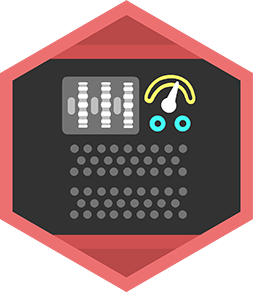Send a Message in Morse Code
Learn Morse code, encode a secret message, and send it using a flashlight or tapping system while a friend decodes it using a simple chart.



Step-by-step guide to send a message in Morse code
Step 1
Gather all your materials and sit at a clear table so everything is easy to reach.
Step 2
Ask an adult to show you a simple Morse code chart online or in a book.
Step 3
Copy the Morse code chart onto your paper so you can read it while you work.
Step 4
Read the timing rules out loud so you remember them: dot = 1 beat short flash or tap; dash = 3 beats long flash or tap; 1 beat between parts of a letter; 3 beats between letters; 7 beats between words.
Step 5
Practice making a short dot and a long dash with your flashlight or by tapping for two minutes while counting beats on your timer or watch.
Step 6
Choose a short secret message and write it down in plain words on your paper.
Step 7
Encode your secret message by writing the dots and dashes for each letter under the plain words using your copied chart.
Step 8
Decide with your friend whether you will send signals with the flashlight or by tapping and agree how far apart to stand.
Step 9
Do a one-letter test: send one encoded letter and have your friend try to decode it aloud.
Step 10
Send the whole encoded secret message using correct beat lengths and the proper pauses between letters and words.
Step 11
Have your friend decode each letter using the chart and write the decoded letters on their paper.
Step 12
Compare the decoded message to your original and practice any letters that were mixed up once or twice to improve timing.
Step 13
Share your finished Morse chart and your decoded secret message on DIY.org
Final steps
You're almost there! Complete all the steps, bring your creation to life, post it, and conquer the challenge!


Help!?
What can we use if we don't have a flashlight or a timer/watch?
Use a smartphone's flashlight and its stopwatch or timer app, a small LED keychain or desk lamp for flashes, and if you lack a timer simply count beats aloud while following the timing rules from the instructions.
Our friend keeps getting letters wrong—what can we do to fix that?
If letters are being decoded incorrectly, repeat the two-minute practice step making dots and dashes while counting beats, run the one-letter test again, and slow down so your flashes or taps match the dot (1 beat), dash (3 beats), and the 3- and 7-beat pauses between letters and words.
How can we adapt this activity for younger or older kids?
For younger children, use tapping on the table, pick a very short secret message, and have an adult count beats during the practice step, while older kids can send longer messages with numbers or punctuation, increase signal distance, and time themselves after the one-letter test for a speed challenge.
How can we make the activity more creative or challenging after finishing the basic message?
To extend the activity, personalize and decorate the copied Morse chart, try encoding longer or coded messages (including numbers), record the sending while timing beats from the practice step, and then share the finished Morse chart and decoded message on DIY.org as the instructions suggest.
Watch videos on how to send a message in Morse code
Daily Challenge - Send a Message with Morse Code
Facts about Morse code and signaling
⚡ Samuel Morse (with Alfred Vail) helped invent the electric telegraph and the early version of Morse code in the 1830s–1840s.
🆘 SOS (...---...) is a special, easy-to-recognize Morse distress signal used by ships and rescuers to call for help.
🧠 The letter E is the most common in English and is just a single dot in Morse — the shortest, fastest signal!
🎧 Top Morse operators can hear and decode messages at over 40 words per minute — as fast as a quick conversation!
🔦 You can send Morse with light — navies used signal lamps like the Aldis lamp to blink messages across the water!
How do I teach my child to send a message in Morse code using a flashlight or tapping?
What materials do I need to set up a Morse code message activity for kids?
What ages is the Morse code flashlight/tapping activity suitable for?
What are the benefits, safety tips, or fun variations for a Morse code message activity?


One subscription, many ways to play and learn.
Only $6.99 after trial. No credit card required



